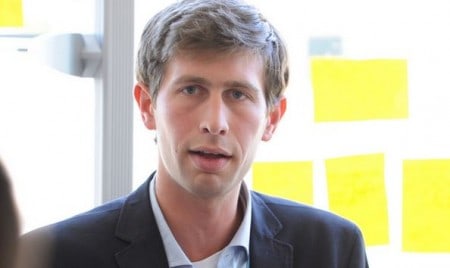What a Young Professional Cover Letter Should Look Like


For even deeper insights on how to write a stellar cover letter, check out the article by Rohan Punamia at his blog, 2 by 22.
Kill the cover letter?
I don’t think so.
In an article called “Kill the Cover Letter and Resume,” Jesse Singal at New York Magazine proposes we do away with the pair because they are boring, inefficient and littered with social and racial biases.
Here’s a prejudice I would love an employer to hold: “This person’s cover letter is so damn good that now I am biased and want to interview him.”
Every one of us has experiences and knowledge employers crave…even from an internship, as a volunteer or in college. Problem is, we don’t always know how to convey it.
I hope you find the cover letter template below useful. It contains my best writing/editing practices and is an appropriate length. ***Note: It’s a fictional scenario.***
Two main components of an effective cover letter, in my view:
– Begin with a memorable story to catch the reader’s attention and demonstrate ability (more info on storytelling).
– Relate how your skills and experiences can help the company with its challenges.
Learn to tell your own story, and doors will open. [TWEET]
The Template for an Effective Young Professional Cover Letter
An effective storytelling cover letter contains the six parts listed below. In the two examples on the following pages, I point out where each part occurs within the letter.
PART 1: Open with a line that places readers into the story. Grab their attention and make them think, “Hmm, this is different. I want to know more.”
PART 2: Include concrete details about the story. The more specific you are, the more colorful the anecdote. Provide hard numbers when appropriate and give exact locations and job titles.
PART 3: Demonstrate how the story applies to the job you want. Refer to the job description and make sure the anecdote reflects the person the company wants to hire.
PART 4: Show you researched the company and understand its opportunities in the broader marketplace. Also explain how you will help the company grow its business. Ultimately, managers want to know how you will make the company more successful.
PART 5: Share more of your qualities as they relate to the story at the top. Again, reference the job description, touch on qualities you know the company admires and show how you would be a good cultural fit.
PART 6: Mention your story one fi nal time and bring the cover letter full circle.
Footnotes:
1. Start with a unique story; hook the reader.
2. Give concrete details. The more specific, the more colorful the anecdote.
3. Demonstrate how the story applies to the job you want.
4. Prove you researched the company and understand its challenges in the broader marketplace. (more on this topic)
5. Share more of your qualities as they relate to the story at the top.
6. End by referencing the beginning; bring the cover letter full circle.
Recap:
The cover letter I wrote is (hopefully) memorable and proves the person is right for the job.
Remember: you have tremendous life experiences. Think hard, bring them to the surface and make your job application impossible to forget.
Good luck!
Featured: itupictures (Flickr)



Related Articles
April 5, 2016
How to Write a Great Blog Post Headline
The answer is in the headline you just read.
Read More
June 1, 2018
How a Manager Should Critique an Employee’s Work
It’s called “considerate strength.”
Read More
May 15, 2014
How to Write the 7 Most Awkward Job-Related Emails
Don’t struggle anymore.
Read More